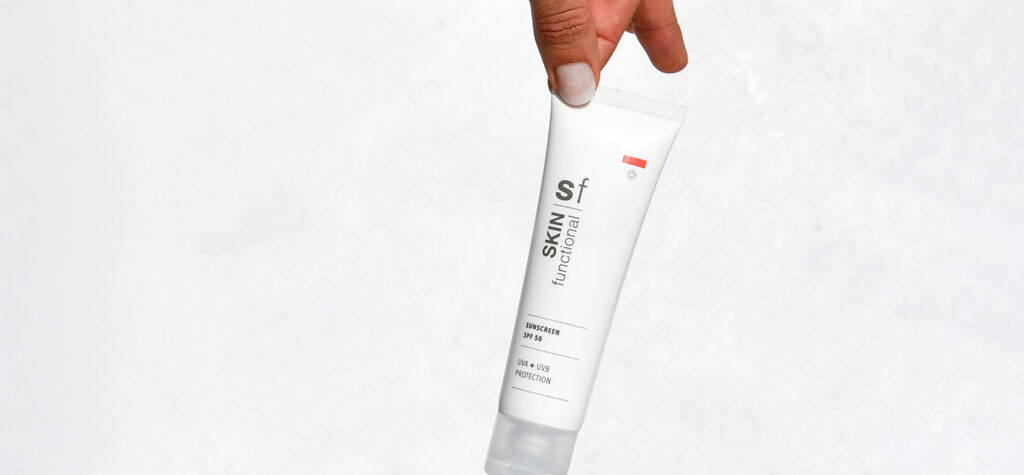
FREE SHIPPING FOR ORDERS OVER R500 WITHIN SOUTH AFRICA
Free shipping for orders over R500
FREE SHIPPING FOR ORDERS OVER R500 WITHIN SOUTH AFRICA
Free shipping for orders over R500

October 2021 – Sunscreen is the single best thing that you can do for your skin on a daily basis. According to skincare specialists around the world, up to 90 percent of signs of photoaging like brown spots and wrinkles occur due to the sun’s UV rays. SPF helps protect our skin from this UV damage, which can also cause more serious conditions like skin cancer. SPF stands for Sun Protection Factor, and is a measure to determine how well sunscreen is able to shield off UV rays.
Contrary to some beliefs, a powerful SPF should be applied to the skin anytime you step outside,regardless of the season. Sun damage does not only occur in the sunny seasons. Your skin can absorb harmful UV rays even in Winter. Sunscreen is an everyday thing! Knowing what damages your skin and why applying an SPF is so important, all comes down to skintelligence (skin intelligence) and knowing the education behind it all.
Kevin Khosa, Customer Service Manager at SKIN functional says, “There are three types of harmful rays you need to protect your skin against. (1) UVA rays can penetrate your skin more deeply and cause your skin cells to age prematurely and worsen pigmentation. About 95 percent of the UV rays that reach the ground are UVA rays. The other five percent of UV rays are UVB. (2) UVB rays are the most dangerous for the skin. They have higher energy levels than UVA rays, and typically damage the outermost layers of your skin, causing sunburn. (3) Infared rays are what makes the sun warm and is also part of the electromagnetic spectrum. People encounter Infrared waves every day; the human eye cannot see it, but humans can detect it as heat. For example: A remote control uses light waves just beyond the visible spectrum of light—infrared light waves—to change channels on your TV. These are aren’t too dangerous but something to consider. Important to note that the sun contains all three of these harmful rays.”
Now that we know the types of harmful rays, how do you choose the correct sunscreen/SPF to use to ensure your skin is protected?
There are two types of sunscreens that you need to know about:
1. Mineral or organic sunscreens and;
2. Chemical or inorganic sunscreens
These two types of sunscreens reflect the particle size of the filters. Mineral sunscreen has a larger or inorganic reflect size of the particle. For example, Titanium dioxide and zinc dioxide are larger molecules which sit on the surface, making skin grey leaving what we know as a ‘white cast’. These filters do not contain carbon.
In order to achieve longer protection from the sun you need to know the SPF strengths and what they mean. The number in the SPF is a ratio. SPF 15, 20, 30, 50 all have the same physical protection within the burn time. Burn time is classified as the time you start damaging cells. Every skin has a different burn time. SPF 50 has a longer protection time until burn time than SPF 30 for example. SPF 15, 20, 30, 50 etc. relates only to UVB.
NEW BROAD SPECTRUM SPF!
Finding the right SPF product that helps protect the skin against all three harmful rays, that also aren’t too thick and oily and doesn’t leave a white cast on the skin – can be difficult, to say the least! That is why SKIN functional has created the its brand new SPF 50. This SPF is a chemical, broad spectrum SPF that provides protection against UVA and UVB. This unique product is a light weight sunscreen that is not oily and doesn’t leave you with that dreaded white cast.
This UVA + UVB protection Sunscreen SPF 50 is independently tested and approved for an SPF rating of 50 and is also fragrance free and cruelty free. The product is suitable for all skin types. Bid farewell to sunburn, red, dry and pigmented skin and step outside with peace of mind knowing that your skin has its shield of armer protecting it whereever you go. Remember, protect your skin today to reep the benefits when you are older. Sun damager occurs over time, so its never too late to start incorporating an SPF into your daily skincare routine. Better late than never we say!
We will give you the right amount of love!
From expert advice, specials and new products, be the first to know.
No spamming, we promise!






Click on the button below and choose 2 free gifts.
Hurry, while stocks last!